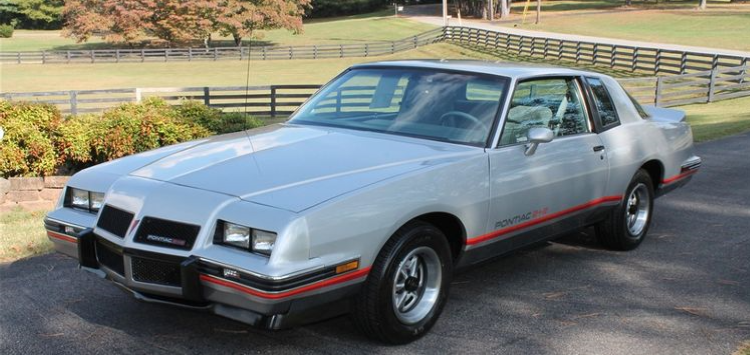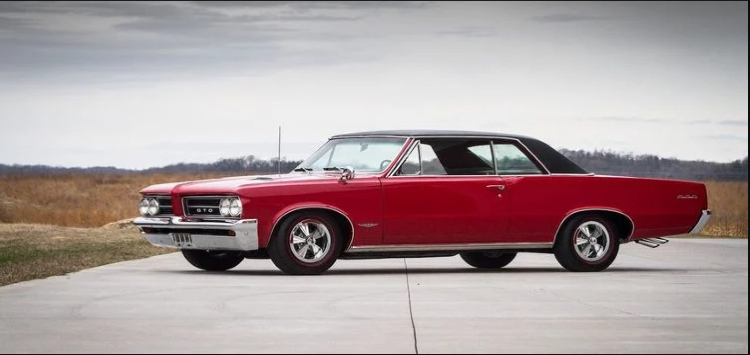You’Re A Fan Of Muscle Cars, So Did You Know This About Pontiac?
When it comes to the golden era of American muscle cars, few brands are more famous than Pontiac. Although the brand was discontinued around 2010, Pontiac created numerous instant classics during its 90+ year tenure on the market. But out of all the brand’s classic cars, none of Pontiac’s nameplates inspired more car fans than their muscle cars, especially the ever-dependable Pontiac GTO.
Other contributions to their collection include the Pontiac Trans Am, The Firebird, and The Grand Prix. But there is more to the history of these muscle cars than big-block engines and speed. Pontiac’s muscle car history is a rich one, and even the most dedicated Pontiac fans might be surprised by what they do not know about the brand that gave the world the GTO and Firebird.
8/8
The First GTO Set The Standard For American Muscle Cars
Technically, the first muscle car came to life in 1949 and was not a Pontiac. One of GM’s other brands, Oldsmobile, decided to experiment with a V8 engine in a lighter body and frame, thus laying the foundation for the muscle car movement that came years later.
The first American muscle car was an Oldsmobile Rocket 88. After a series of other brands experimenting with big-block engines in mid-sized sedans and coupes, Pontiac eventually struck gold when they adapted their Tempest sedans into the Pontiac GTO in 1963.
7/8
John Delorean Helped Create The GTO
Fun fact about the Pontiac GTO, it was the brainchild of none other than the legendary car engineer himself, John Delorean. Although he is famous for the slow to perform line of cars that had 15 minutes of fame in the 1980s before his company went bankrupt, John Delorean made a name for himself working for General Motors, leading the design team for several of their classic cars.
Not only is Delorean responsible for giving the world the Delorean sports car and the Pontiac GTO, but he also designed the Pontiac Firebird, the Grand Prix, and the Chevrolet Vega.
6/8
The 1973 GTO Is Very Affordable Today
If one is on the hunt for either a project muscle car or a functional GTO to add to their collection. According to Hagerty, the most affordable option is the 1973 GTO.
This is most likely because the 1973 performed the worst on the market out of all the GTO model years. For the record, 1973 GTOs are fine, their poor sales performance was more likely caused by a saturated market rather than any mechanical issues with the 1973. Still, less than 5000 1973s sold in their first year, but today Hagerty estimates that the average price of a 1973 is just under $10,000, which is a phenomenal price for an American classic.
5/8
The 2002 Firebird Trans Am WS6 Was One Of Their Fastest Cars
Pontiac attempted to revitalize their iconic muscle car nameplates in the early 2000s to little applause. Critics were not enthusiastic about Pontiac at the time because the company had delivered some major duds like the notoriously hideous and unreliable Pontiac Aztek.
That said, the early 2000s reintroductions of the Trans Am, GTO, and Grand Prix had things working for them. For example, while the 0-60 time is a little slow compared to more finely tuned sports cars, the 2002 Firebird Trans Am WS6 is one of the fastest Pontiacs ever built. It did its 60-mph sprint in 4.8 seconds.
4/8
The 1969 GTO Convertible Is The Most Expensive Pontiac Muscle Car
Those hunting for a GTO to add to their collection might want to seek a 1969 or 1970 year model as these are considered the most reliable years.
Interestingly, Pontiac sold several GTOs in the 1969 model year, but for some reason, they made almost none of their GTOS as convertibles. The GTO convertible was eventually discontinued in 1971, and 1969 only saw 5 produced. Because they are so rare, they are the most valuable of the GTO model years and trims. Some have sold for over half of a million dollars.
3/8
Less Than 2000 1986 Pontiac Grand Prix 2+2 Exist
Another rare gem that collectors might be interested in hunting down is the 1986 Pontiac Grand Prix 2+2. The 1980s were a challenging time for Pontiac, muscle car sales had dropped and the GTO had been discontinued, and the increased environmental regulations were causing Pontiac engineers to scramble for ideas.
While they had a few duds, the Grand Prix 2+2 is an interesting installment because they were developments on streetcars that would be used in NASCAR events. The primary market for the Grand Prix 2+2 were NASCAR fans, according to GM Authority. The car saw extremely limited production. Only 1,118 were ever made. The car’s aerodynamic changes include a “bubble” back window and rear decklid spoilers. One can be yours for around $20,000.
2/8
The Pontiac Tempest Was The Grandfather of Muscle Cars
One might be wondering, “how did the GTO come to being?” As mentioned before, companies began experimenting with the use of big-block engines in smaller or lighter frames and bodies, and eventually, they manifested into products like the GTO.
But the GTO was produced through modifications to other vehicles. The GTO used the frame of the Tempest and an A-body platform, but the Tempest did not have a V8 engine. Once the 389 cubic inch block was installed in this machine, the rest was history.
1/8
Pontiacs Are Considered Some Of The Most Reliable Muscle Cars
While the 2000s reintroduction flopped, Pontiac reigned supreme when it came to muscle cars for as long as they did because of more than just speed and horsepower. It was dependability that put them ahead of the competition.
Even though some models are now 50 or 60 years old, many of the original Pontiac muscle cars are still drivable. Even during its heyday, Pontiac had a reputation for reliability. It was only when that reputation began to slip that the company began to go under. Cars produced during their peak, like the GTO, have earned their place in our garages.










![Photo of [VIDEO] Some Corvettes Drowned While Others Carried On Like Submarines After Tropical Storm Hits Miami.](https://alltin.net/wp-content/uploads/2022/06/0-31-390x220.png)


I didn’t know that.